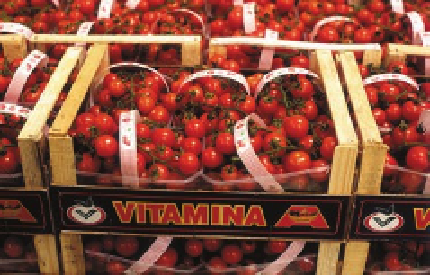Agriculture Reference
In-Depth Information
social demand, nowadays in Europe the
costs involved in the absence of quality
(defective products, claims, lawsuits) may
be estimated at between 5 and 20% of the
sales value (Rivera, 2000).
Guaranteeing the quality to the custom-
ers requires, in practice, having a 'quality
guarantee system', that is the 'organization
structure, the procedures and required
resources to start a quality guarantee sys-
tem' (Regulation ISO-8402). Quality control
in the agri-food system is the set of pre-
established actions to ensure the consumer's
trust in the demanded quality. The 'quality
system' is a strategic and organizational
model articulated to carry out the desired
quality control.
The quality system of a company must
be 'certified' by a competent body (i.e.
Asociación Española de Normalización y
Tipificación (AENOR) in Spain), so that the
company can show their customers that cer-
tification, as a prestige label supporting the
quality of their products. Regulation ISO-
9001 integrates and updates the previous
regulations on the subject.
The final objective of agri-food certifi-
cation is to provide confidence and mutual
appreciation between the retailer and the
customer. Nowadays, the most widespread
quality system under certification in
Spanish horticultural processing plants
is the Controlled Production system,
described in the regulation series UNE-
155001 of AENOR (the Spanish Association
for Standardization and Certification) that
includes regulations on non-processed
fruits and vegetables, destined for consump-
tion in their natural state (Sierra, 2003). In
addition, there are Integrated Production
Regulations, in different regions (Aparicio
et al
., 2003).
The development of these quality cer-
tifications has been determined, to a large
extent, by the quality regulations imposed
by the so called Euro-Retailer Produce
Working Group (EUREP), which repre-
sents the most important association of
agri-food distribution chains in the
European Union, who have established a
'good agricultural practices code' known
as EUREP-GAP.
Photo 16.5.
Consumers place a high value on
fresh fruits and vegetables as a natural and
healthy food.
The greenhouse growing conditions
(light, temperature, irrigation, nutrition,
salinity) affect the quality (Welles, 1999), so
their management must be optimized.
The qualitative attributes of vegetables
vary with the species. In some products
such as cucumber, whose shelf life (length
of time a food is given before it is unsuitable
for consumption) is the main quality
attribute, a qualitative evaluation is simple,
whereas for others such as tomato, it is more
complicated, especially regarding its organo-
leptic characteristics.
In some cases, such as tomato, achieving
a high quality may involve a decrease in the
yield, so a compromise between quality and
quantity in the production must be reached.
In general, the quality regulations of
fruits and vegetables in Europe are based on
the external quality (appearance and condi-
tion) and in the critical concentrations of
pesticides and nitrates (Schnitzler and
Gruda, 2003).
It is evident that the future relies on the
quality, but is must be economically feasi-
ble quality. The fixing of integral quality
systems is a clear priority in the production
of greenhouse vegetables. The technical
aspects of the vegetable quality are described
in Chapter 15.
16.8
Quality Management
Quality must become a priority in the agri-
food business, because, besides it being a

